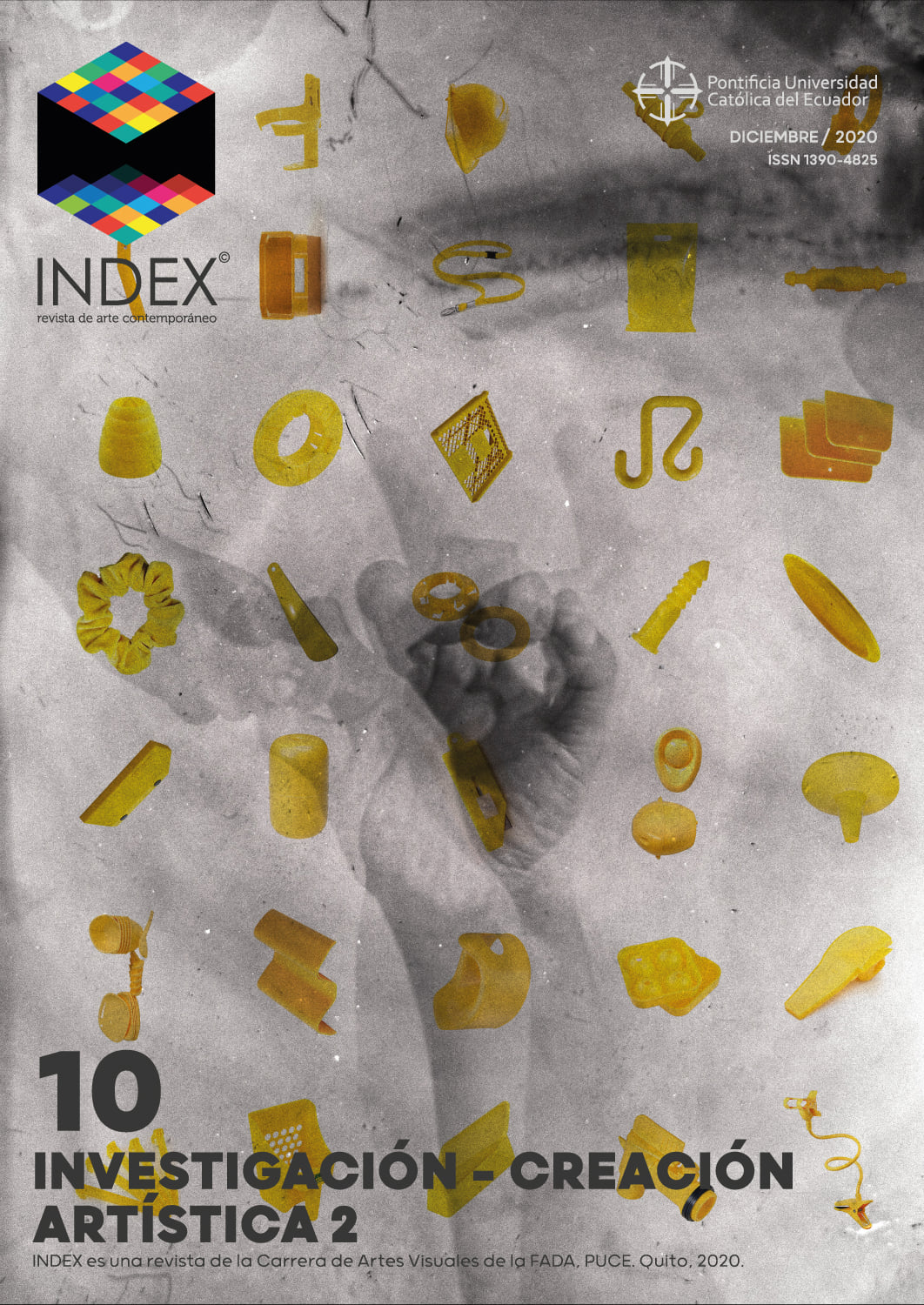The non-body An alternate space to violence
Main Article Content
Abstract
This article explains the notion of “non-body” as the main concept in the thought of violence representation. The reason for needing a link between the meaning of the pre-Hispanic image and the images that are displayed today is explained, which would lead to think of them as complex constructions and a powerful manifestation of power. Likewise, I propose the use of corporality as a fundamental axis for the supression of such violence; being so that the act of using my body print, or as a claim throughout my work, the graphein will speak of a reappropriation of the fragmented body or without unity that, through the image, would grant an alternate space, an evocative space, one that allows to face violence, experience it and digest it, in other words, make mine his speech.
Downloads
Article Details
Index, revista de arte contemporáneo maneja sus derechos bajo licencia Creative Commons Reconocimiento-NoComercial 4.0. En ese sentido los envíos quedan sujetos a la decisión del autor.
References
Benjamin, W. (1998). Para una crítica de la violencia y otros ensayos . Madrid: Taurus.
Campligia, M. (2014). Teresa Margolles. Reiterating Violence. Bareclona Research, Art, Creation.
Debray, R. (1994). Vida y muerte en la imagen. Historia de la mirada de occidente. Barcelona: PAIDÓS.
Didi-Huberman, G. (2006). El gesto fantasma. ACTO Revista de Pensamiento Artístico Contemporáneo , 281-291.
Diéguez, I. (2013). Cuerpos sin duelo. Iconografías y teatralidades del dolor. Argentina: DocumentA/Escénicas.
Korstanje, M. (2011). SOBRE LA VIOLENCIA. Seis reflexiones marginales. En respuesta a S. Zizek. Nómadas Revista Crítica de Ciencias Sociales y Jurídicas.
Moraña, M., & Prado, I. (2014). Heridas abiertas, biopolítica y representación en América Latina. Madrid: Iberoamericana.
Silverman, K. (2009). El umbrla del mundo visible. España: AKAL.
Slavoj, Z. (2009). Sobre la violencia. Seis reflexiones marginales. España: PAIDÓS.
Uriarte, T. (2013). La pintura mural prehispánica en México V. Cacaxtla. Tomo II/Estudios. México, Instituto de Investigaciones Estéticas: UNAM.
Uribe, M. V. (1990). MATAR, REMATAR Y CONTRAMATAR. Las masacres de la violencia en Tolima 1948-1964. Bogotá: CINEP.

